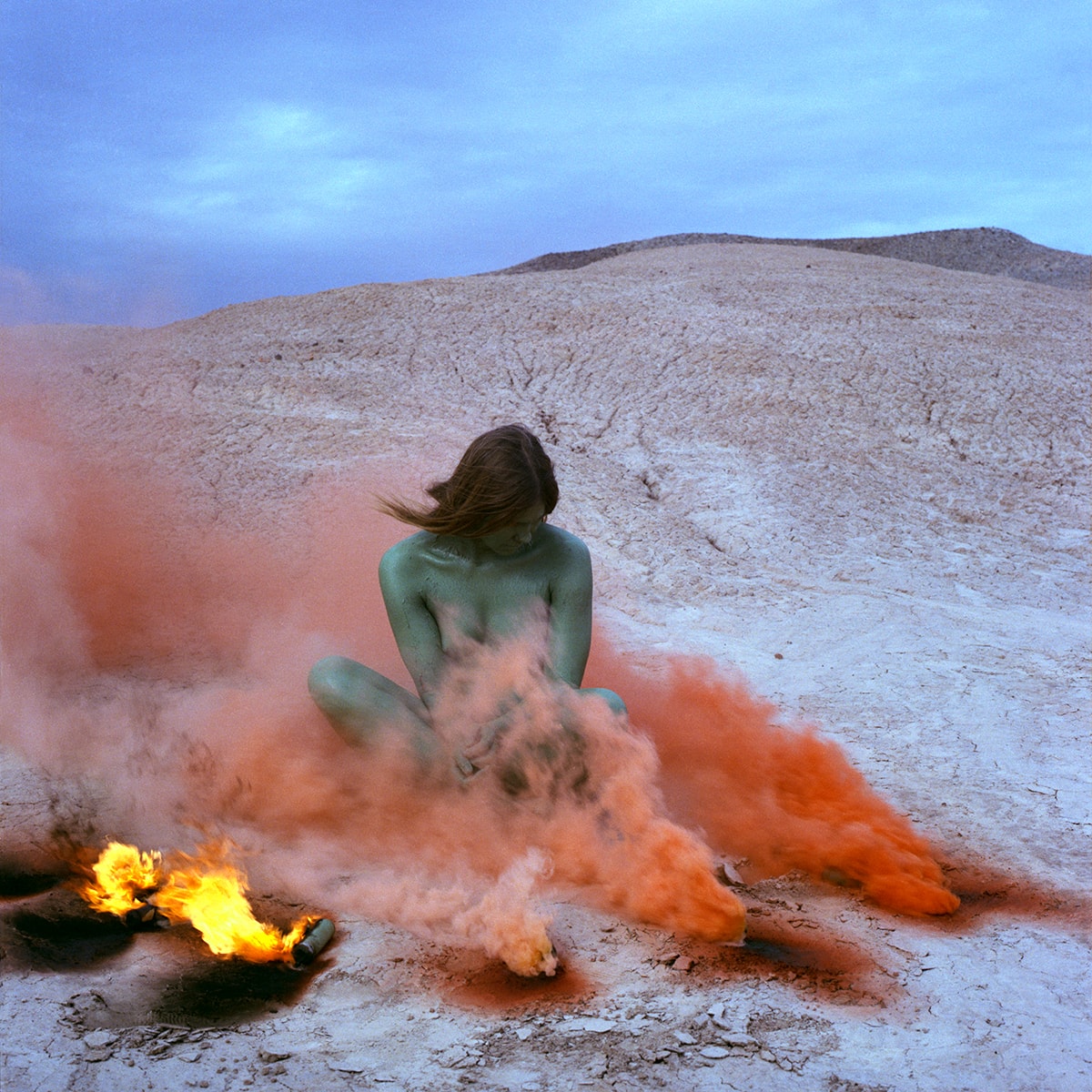


Judy Chicago, Immolation, 1972. Courtesy of the artist, Salon 94, New York and Jessica Silverman Gallery, San Francisco.
“You may shoot me with your words, you may cut me with your eyes, you may kill me with your hatefulness, but still, like air, I’ll rise.” Maya Angelou’s famous poem gives the title and the spirit to the current exhibition at Nottingham Contemporary.
Bringing together historical and contemporary artworks from a feminist and queer perceptive, the exhibition explores systems of domination – dictatorial regimes, gendered violence, domestic coercion – and does this by presenting objects and their histories of insurrection.
The viewer can follow their own route within a non-sequential framework and the exhibition design allows for unusual visual possibilities, presenting a non-linear view of feminism that contests the standard linear and triumphalist patriarchal perspective. The intent of the curators, Irene Aristizábal, Rosie Cooper and Cédric Fauq, is to “keep things porous, to allow for new and unpredictable connections”, and I found many visitors on the Wednesday morning I visited to be moving fluidly across spaces and around the exhibition’s objects.
Embracing the non-sequential aspect of this show, the first works I encountered centred around the representation of the domestic sphere. There is an early 20th century (and unrealised) architectural project by Alice Constance Austin which opposes the single occupancy dwelling with a communitarian way of living, with centralised facilities that would eliminate private domestic labour. Such issues were further developed in the video Charming for Revolution (2009) by Pauline Boudry and Renate Lorenz, which reimagines the housewife as a radical and ambiguous figure, exploring important queer and feminist struggles such as the International Wages for Housework campaign started in Padua in 1972 and work by feminist writer Silvia Federici.
The everyday tasks of housekeeping are also explored in Blondell Cummings’ iconic dance piece Chicken Soup (1981), a solo piece based on memories of her grandmother in the kitchen. Domestic actions such as floor scrubbing are interrupted by jagged and convulsive movements, raising questions as to whether this woman is content in her labour or if it was driving her to the brink. This work is in direct dialogue with Hayv Kahraman’s large painting of the floorplan of a house in Baghdad, overlaid with bodies of young women that merge the corporeal and the architectural into one. “The house is my domain,” the artist writes about these works. “When you enter you will resign and obey. At least that’s what I have to believe if I were to survive.”
Whilst many institutions in the UK and around the world are aware that the representation of women artists in museums is low, policies designed to address this problem can be ambiguous or even counterproductive. Aren’t there many ways of addressing gender imbalance? How should we address the breadth of what gender can be? Should men be excluded in this process? Still I Rise brings some crucial examples to the fore: Eduardo Gil documented the women who fought for their rights in Argentina, the mothers and grandmothers of those who ‘disappeared’ during the regime of General Jorge Rafael Videla between 1976-81; 0rphan Drift, a cyberfeminist entity active from 1994 to 2003; Glenn Belverio’s video Glennda and Camille Do Downtown (1993), in which he uses his drag persona Glennda Orgasm to disrupt preconceived ideas of gender; Queer Nation activist and drag artist Terence Smith, who ran for president of the United States in 1992 as Joan Jett Blakk.
The idea of fighting for gender and queer rights is carefully researched throughout the exhibition, bringing in rarely acknowledged figures such as anarchist Louise Michel, who played a leading role in the Paris Commune of 1871, and banners made for the National Union of Women’s Suffrage Societies in 1908 by Mary Lowndes, who was also a key figure in the Arts and Crafts movement. Another rare find was Corita Kent, an activist, teacher and nun who became an artist in the 1970s. She fought for the autonomy of women in different communities, ultimately resigning from her religious order. These figures are juxtaposed with more prominent supporters of the Civil Rights Movement, such as Faith Ringgold and Suzanne Lacy, and documentation of resistance movements around the world from the 1970s to the present day.
While these works explore in different ways ideas of self-organisation, non-violence and policy-making, the curators also touch upon the legacies of colonialism by including contemporary artists like Barby Asante and her important work with local communities recording different narratives and perspectives. A sound piece by Okwui Okpokwasili on the Women’s War also features, a resistance movement led by Igbo women in response to British colonial rule in Nigeria.
This is a fleeting trace of an exhibition that is the result of a collective effort to research, integrate and highlight different aspects of what feminism can be, and what a feminist approach from within an institution can be. It leaves the door open to further research, raising issues around what it means to represent the female (and its expanded notions) in public institutions. The show is a circulating story that demands closer attention, a call to question and advance the influence of feminist and queer exhibition making.
Ilaria Puri Purini
Curator of Programmes
After finishing at Nottingham Contemporary, ‘Act 2’ of the exhibition will take place at the De La Warr Pavilion in Bexhill-on-Sea between 9 February – 2 June 2019.
Nottingham Contemporary, Weekday Cross, Nottingham NG1 2GB. Open Tuesday - Saturday 10.00-18.00, Sunday 11.00-17.00. Exhibition continues until 27 January 2019. www.nottinghamcontemporary.org